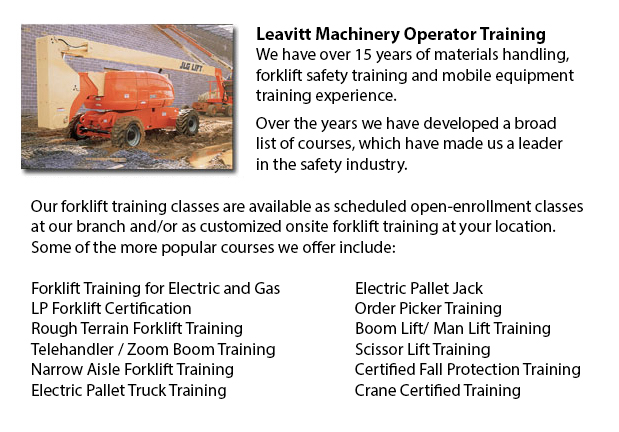
Kitchener Aerial Lift Certification - Aerial Lift Certification is for those who requires an in-depth understanding of aerial lift safety. Inspectors and operators, construction craftsmen, supervisors and maintenance workers need to perform a certificate and training program. State, federal and provincial regulations require companies to be certified in order to carry out in-house aerial lift checks.
Nearly all workers who are needed to work at elevated level would normally utilize the same means to get to these required heights, regardless of the type of work which needs to be carried out. Scissor lifts and aerial lifts are the mechanized devices used to lift equipment and workers to elevated sites.
Cherry pickers or bucket trucks are boom-supported aerial platforms. The primary dangers related to boom-operated platforms are falls, electrocutions, and tip overs. Certification makes sure that workers who use aerial lifts are correctly trained to safely operate the equipment. Training also guarantees that workers know how to maintain aerial work platforms in accordance with the instructions of the manufacturer.
Aerial lift training certification programs would include the following: Vehicle-mounted aerial lifts, Boom-supported scissor lifts and aerial lifts. Trainees would learn about safe operating procedures and would gain an understanding about the dangers which often lead to aerial lift accidents. They will become technically competent in the various types of aerial lifts, as well as parts and terms. From interpreting rated capacity charts to choosing the best aerial lift for the job, the certification program would provide workers with all that they must know in order to safely carry out their work.
Those who are assigned the job of inspecting aerial lift devices need to know how to check gears, booms, structural parts, operating mechanisms, functions and control systems, power plants, braking systems, attachments, shafts and pins, hydraulic, pneumatic and electric components, emergency safety devices and operator aids, and so on. Training will consist of the following: the inspector's role in lessening accidents and liability exposure; monthly and annual check; how to perform a pre-use; how to write inspection reports; how to apply and interpret rules regarding aerial lift safety standards; inspection procedures, checklists and techniques; following record keeping requirements; understanding and applying the three levels of aerial lift inspection; and when to remove defective aerial lifts from service.
-
Kitchener Forklift Training Schools
Kitchener Forklift Training Schools - The Advantages Of Taking One Of Our Forklift Training Schools Are you searching for work as a driver of a forklift? Our regulatory-compliant mobile equipment operator training offers instruction in types of fo... More -
Kitchener Overhead Crane Operator Training
Kitchener Overhead Crane Operator Training - Our overhead crane operator training course is designed to teach employees the basics of overhead crane/sling operation and pre-shift checks. Courses are taught by our expert trainers and consultants. Well... More -
Kitchener Crane Training School
Kitchener Crane Training School - The crane training school offers industry-relevant programs. Courses provide trainees with learning outcomes which match present industry demands. Our small class sizes combine hands-on experience and theory. Our qua... More -
Kitchener Skid Steer Ticket
Kitchener Skid Steer Ticket - The lift arms on the skid-steer loader are located at the side of the driver along with pivots behind the driver's shoulders. These features makes the skid-steer loader different as opposed to the conventional front load... More -
Kitchener Manlift Operator Certification
Kitchener Manlift Operator Certification - Our scissor platform and aerial lift training and certification empowers participants with a knowledge and general understanding of the efficient and safe use of "Power Operated Mobile Work Platforms," under... More -
Kitchener Crane Safety Training
Kitchener Crane Safety Training - Companies and crane operators have to be aware of the problems related to crane safety. Legislation provides rules for the safe operation, inspection and maintenance of lifting machines all around North America. Cran... More -
Kitchener Forklift Training Programs
Kitchener Forklift Training Programs - Are you searching for work as a forklift driver? Our regulatory-compliant mobile equipment operator training offers instruction in kinds of forklifts, pre-shift check, fuel kinds and dealing with fuels, and safe... More -
Telehandler Training in Kitchener
Telescopic handlers often known as telehandlers for short, are an extremely popular piece of heavy construction machinery. They are commonly used in the construction and agricultural industries. These equipments have extreme reaching ability and can... More

Forklift Certification Kitchener
TOLL FREE: 1-888-254-6157
Kitchener, Ontario
forkliftcertificationkitchener.com
Email Us
About Us


